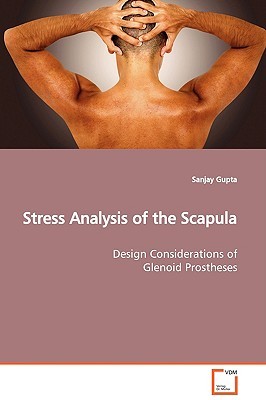
- We will send in 10–14 business days.
- Author: Sanjay Gupta
- Publisher: VDM Verlag
- Year: 2009
- Pages: 172
- ISBN-10: 3639123751
- ISBN-13: 9783639123753
- Format: 15.2 x 22.9 x 1 cm, minkšti viršeliai
- Language: English
- SAVE -10% with code: EXTRA
Reviews
Description
The book deals with a biomechanical analysis of stresses and strain in the scapula and the effect of inclusion of glenoid prosthesis with or without bone- cement. Finite Element (FE) method was used for the numerical analysis. Experimental validation was obtained using strain gage measurements. CT-scan data of the scapula has been used for realistic representation of geometry and material properties. Bone density and stiffness of scapula trabecular bone were related to CT-grey value. Using the static musculoskeletal shoulder model of forces, load transfer across the scapula has been analysed. The study suggests a new experimental set-up towards strain gage validation of FE models of bone. Sub- models (FE models) of two fundamental cemented glenoid component designs (total polyethylene and metal-backed polyethylene) and an uncemented metal- backed design were analysed to understand the relationship between stress generated in the implanted glenoid and failure due to asceptic loosening. Significance of this study lies in analysing some failure criteria and suggesting measures for improved glenoid prostheses in Total Shoulder Arthroplasty.
EXTRA 10 % discount with code: EXTRA
The promotion ends in 23d.13:55:56
The discount code is valid when purchasing from 10 €. Discounts do not stack.
- Author: Sanjay Gupta
- Publisher: VDM Verlag
- Year: 2009
- Pages: 172
- ISBN-10: 3639123751
- ISBN-13: 9783639123753
- Format: 15.2 x 22.9 x 1 cm, minkšti viršeliai
- Language: English English
The book deals with a biomechanical analysis of stresses and strain in the scapula and the effect of inclusion of glenoid prosthesis with or without bone- cement. Finite Element (FE) method was used for the numerical analysis. Experimental validation was obtained using strain gage measurements. CT-scan data of the scapula has been used for realistic representation of geometry and material properties. Bone density and stiffness of scapula trabecular bone were related to CT-grey value. Using the static musculoskeletal shoulder model of forces, load transfer across the scapula has been analysed. The study suggests a new experimental set-up towards strain gage validation of FE models of bone. Sub- models (FE models) of two fundamental cemented glenoid component designs (total polyethylene and metal-backed polyethylene) and an uncemented metal- backed design were analysed to understand the relationship between stress generated in the implanted glenoid and failure due to asceptic loosening. Significance of this study lies in analysing some failure criteria and suggesting measures for improved glenoid prostheses in Total Shoulder Arthroplasty.


Reviews